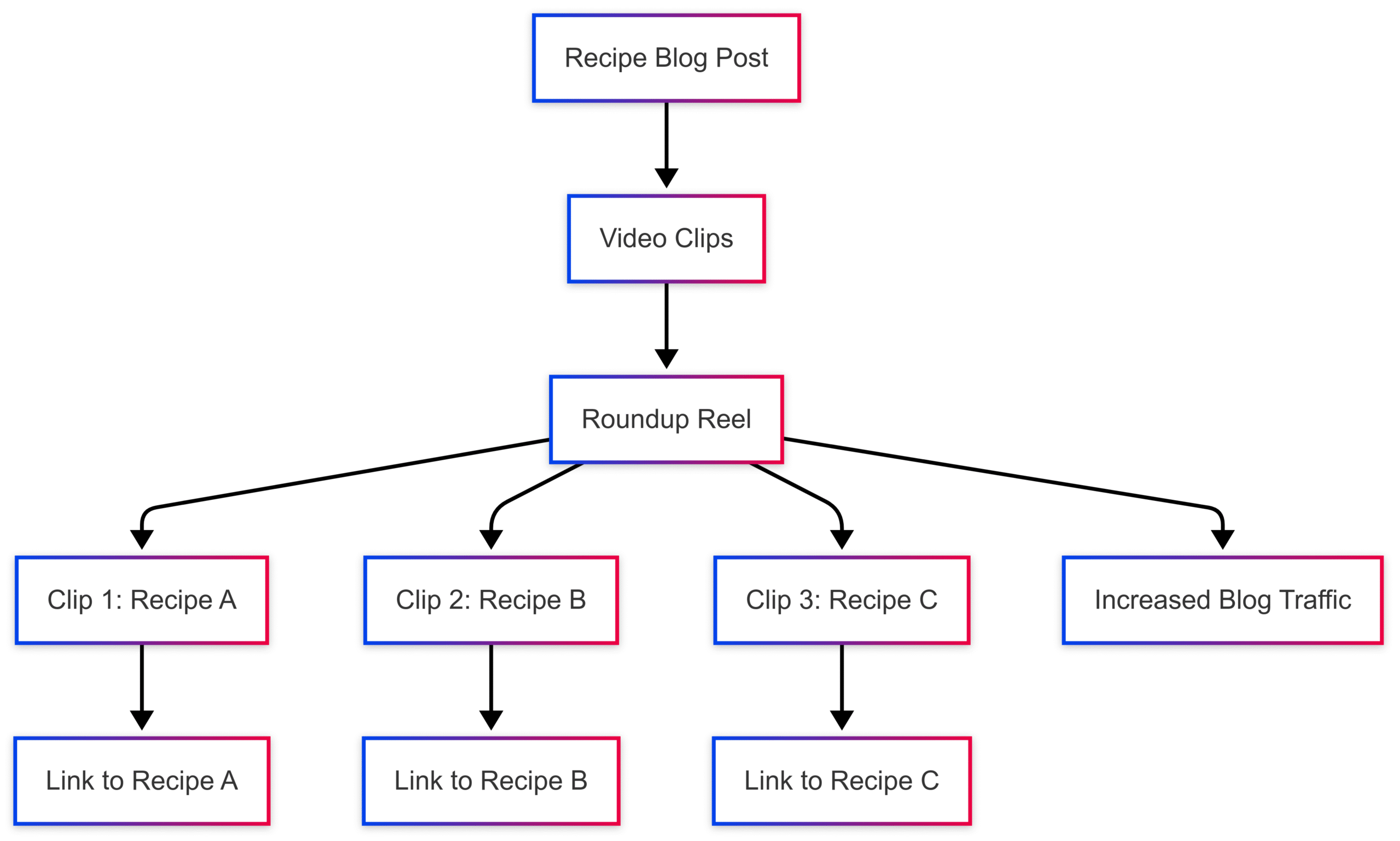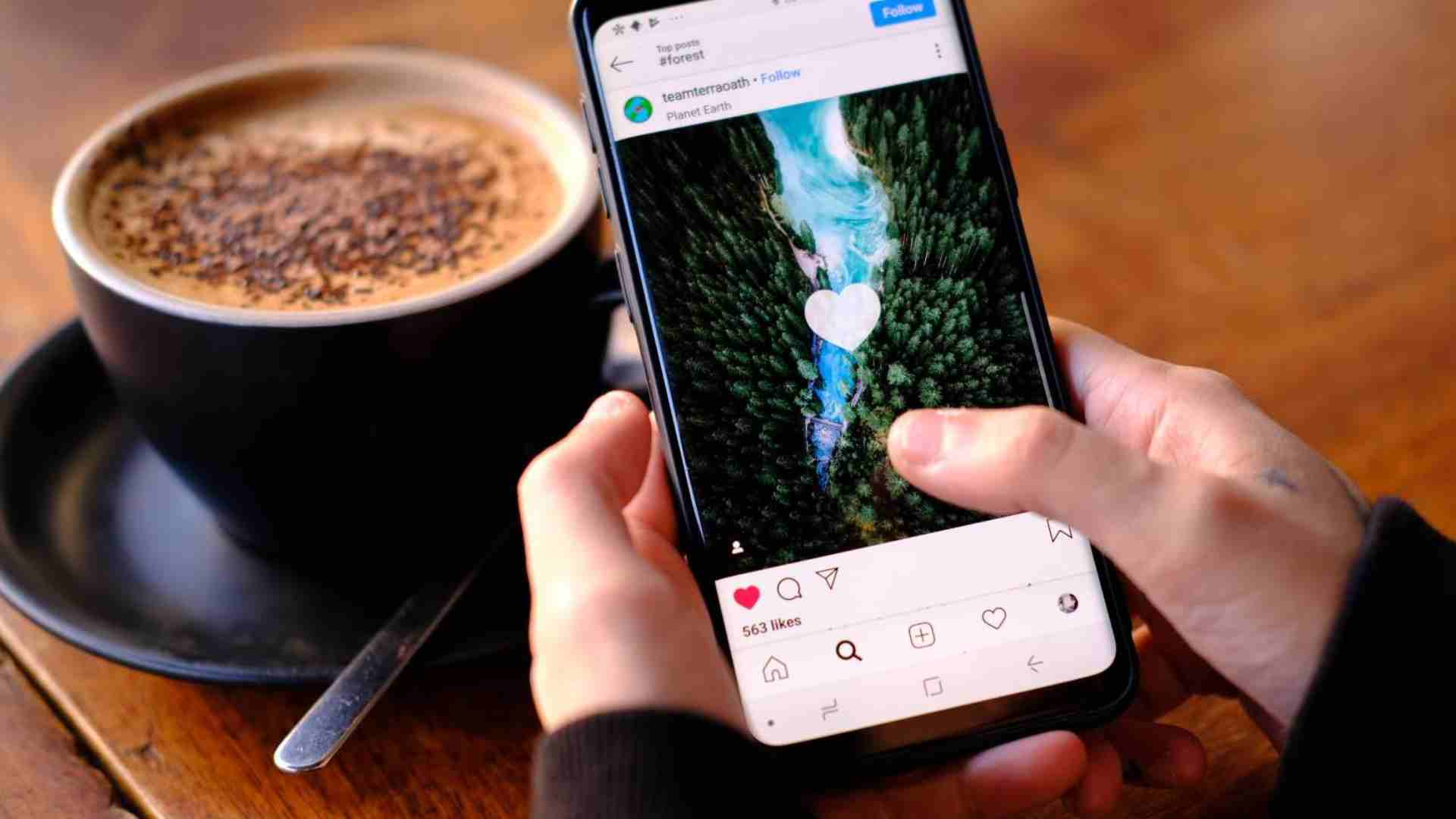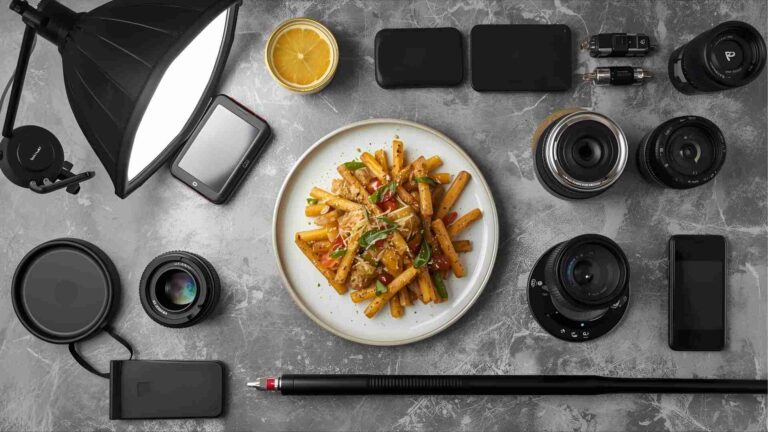17 ways to repurpose recipe blog content on Instagram
In the bustling world of food blogging, creating high-quality recipe content is a labor of love. From planning and cooking to shooting and editing, each blog post represents hours of effort. Yet, the work doesn’t end with publishing. To maximize reach and engagement, repurposing recipe blog content on Instagram is a strategic necessity. Instagram, with its 1.3 billion monthly active users, offers a visually rich platform to showcase your culinary creations, connect with diverse audiences, and drive traffic back to your blog. This article explores 17 practical, efficient, and creative ways to repurpose your recipe blog content for Instagram, saving time while amplifying impact. Whether you’re a seasoned food blogger or just starting, these strategies will help you work smarter, not harder.
Why Repurpose Recipe Blog Content on Instagram?
Repurposing content isn’t about recycling for the sake of it—it’s about strategically extending the life of your work to achieve measurable outcomes. Here’s why repurposing recipe blog content on Instagram pays off:
- Reach Diverse Audiences: People consume content differently. Some prefer reading detailed recipes, while others gravitate toward quick videos or stunning visuals. Instagram’s varied formats—Reels, Stories, carousels, and posts—cater to visual, auditory, and reading preferences, helping you connect with a broader audience.
- Boost Engagement: Instagram’s algorithm favors engaging formats like videos and carousels. Repurposing content into these formats increases likes, comments, and shares, enhancing your visibility.
- Save Time and Resources: Creating fresh content daily is exhausting. Repurposing allows you to leverage existing assets, freeing up time for recipe development or audience interaction.
- Reinforce Your Brand: Repeated exposure to your recipes in different formats builds familiarity. The marketing “rule of seven” suggests audiences need multiple touchpoints before acting—repurposing helps achieve this.
- Improve SEO and Traffic: Sharing Instagram content with links to your blog (via bio or Linktree) drives traffic, while varied content formats create more opportunities for search engine indexing.
- Extend Evergreen Content: Recipes, especially timeless ones, are prime candidates for repurposing. A classic chocolate chip cookie recipe can be reintroduced seasonally or in new formats without losing relevance.
By repurposing strategically, you transform a single blog post into a multifaceted campaign that resonates across Instagram’s ecosystem.
How to Repurpose Recipe Blog Content for Instagram: 17 Strategies
Below are 17 actionable ways to repurpose your recipe blog content on Instagram. Each method is designed to align with Instagram’s visual and interactive nature, ensuring your content captivates and converts.
1. Create Quote Graphics from Recipe Tips
Extract a standout tip or insight from your recipe blog post and turn it into a visually appealing quote graphic. For example, if your post about homemade pasta includes a tip like, “Resting the dough for 30 minutes makes it easier to roll,” overlay this text on a photo of fresh pasta using Canva or Adobe Spark.
- How to Do It: Use a high-quality image from your blog shoot, add bold, legible text, and ensure colors align with your brand. Post as a single image with a caption that teases the full recipe and links to your blog via your bio.
- Why It Works: Quotes are quick to consume and highly shareable, encouraging followers to save or share the post.
- Example: A vibrant image of a pasta dish with the text, “Pro tip: Rest your dough for smoother rolling!” paired with a caption like, “Want the full recipe for perfect homemade pasta? Link in bio!”
2. Turn Listicles into Carousel Posts
If your blog post is a listicle (e.g., “10 Tips for Perfect Sourdough Bread”), transform it into an Instagram carousel. Each slide can highlight one tip, paired with a relevant image or icon.
- How to Do It: Use Canva to create 5–10 slides with consistent branding. Keep text concise (1–2 sentences per slide) and use high-quality images from your blog. Include a call-to-action (CTA) on the last slide, like “Get the full guide at [Link in bio].”
- Why It Works: Carousels have higher engagement rates than single images, as users swipe through multiple slides. Instagram’s algorithm also shows carousels twice in feeds (first and second slides), increasing visibility.
- Example: A sourdough carousel with Slide 1: “Tip 1: Use a digital scale for precise measurements,” featuring a photo of flour being weighed, and Slide 10: “Ready to bake? Full recipe in bio!”
3. Share Recipe Teasers in Stories
Instagram Stories are perfect for quick, casual content that disappears after 24 hours. Use Stories to tease your blog post with behind-the-scenes footage, a snapshot of the finished dish, or a poll related to the recipe.
- How to Do It: Share a short video of you cooking a key step (e.g., kneading dough) or a photo of the final dish with text like, “Guess what’s for dinner?” Add stickers (polls, questions, or link stickers if available) to drive engagement and direct followers to your blog.
- Why It Works: Stories are highly engaging, with over 500 million daily users. They feel authentic and encourage immediate interaction.
- Example: A Story showing a bubbling lasagna with a poll: “Would you add extra cheese? 🧀 Yes/No” and a link sticker to the recipe.
4. Convert Recipe Videos into Reels
If your blog post includes a recipe video, re-crop and edit it into a 15–90-second Instagram Reel. Focus on the most visually compelling parts, like mixing batter or plating the dish.
- How to Do It: Use editing tools like CapCut or InShot to adjust the video to Instagram’s 9:16 aspect ratio. Add captions, music from Instagram’s library, and a CTA like “Full recipe in bio!” Ensure key elements (e.g., text or ingredients) aren’t cropped out.
- Why It Works: Reels are Instagram’s most promoted format, often reaching non-followers via the Explore page. They’re ideal for showcasing dynamic cooking processes.
- Example: A Reel of a chocolate cake being frosted, with text overlays like “3 ingredients!” and upbeat music, ending with “Get the recipe at [Link in bio].”
5. Create Mini-Infographics for Key Data
If your blog post includes stats or measurements (e.g., “5 Essential Spices for Indian Cooking”), turn them into a mini-infographic for Instagram. Highlight one or two key points for maximum impact.
- How to Do It: Use Visme or Canva to design a simple graphic with bold visuals and minimal text. Post as a single image or carousel, with a caption explaining the context and linking to the blog.
- Why It Works: Infographics are visually striking and shareable, making complex information digestible.
- Example: A graphic listing “Top 3 Spices for Curry” with icons of cumin, turmeric, and coriander, captioned, “Spice up your cooking! Full guide in bio.”
6. Share Testimonials as Quote Graphics
If your blog features reader comments or testimonials about a recipe, repurpose them into Instagram posts to build trust. For example, a reader’s comment like “This chili was a hit at my party!” can become a quote graphic.
- How to Do It: Overlay the testimonial on a photo of the dish using Canva. Include the reader’s first name (with permission) and tag them if possible. Post with a caption like, “Love this recipe? Try it yourself! Link in bio.”
- Why It Works: Testimonials provide social proof, encouraging new followers to trust and try your recipes.
- Example: A photo of chili with the text, “Sarah says: ‘Best chili ever!’” and a CTA to the recipe.
7. Turn Blog Steps into Step-by-Step Reels
Break your recipe video into short clips for step-by-step Reels. Each Reel can focus on one step, like “How to Whisk Eggs Perfectly” or “Folding Batter Like a Pro.”
- How to Do It: Use CapCut to edit your video into 10–30-second clips. Add text overlays for clarity and real-time pacing to help viewers follow along. Post as a series over several days, linking to the full recipe.
- Why It Works: Step-by-step Reels are educational and encourage viewers to save them for later, boosting engagement.
- Example: A Reel showing egg whisking with text, “Step 1: Whisk until frothy!” captioned, “Part 1 of our soufflé recipe. Full guide in bio!”
8. Create Roundup Reels for Themed Recipes
Compile clips from multiple blog post videos into a roundup Reel, such as “3 Easy Weeknight Dinners” or “5 Desserts for the Holidays.” Each clip should feature a different recipe with a quick transition.
- How to Do It: Select 3–5 recipes with existing videos. Edit clips (5–10 seconds each) using CapCut, adding text overlays like “Recipe 1: Lemon Chicken.” Post with a caption listing all recipes and a bio link to a roundup blog post or individual recipes.
- Why It Works: Roundups expose followers to multiple recipes at once, increasing the chance they’ll visit your blog.
- Example: A Reel showing clips of pasta, tacos, and stir-fry, with text, “Dinner Ideas #1–3!” and a caption, “Need quick meals? Links in bio!”

9. Embed Videos in Recipe Cards
Enhance your blog’s recipe card by embedding the full recipe video or step-by-step clips. This keeps readers on your site longer and provides a visual guide.
- How to Do It: If using a plugin like Tasty Recipes, embed the full video in the recipe card or split it into clips for each step (e.g., “Step 1: Mix dry ingredients”). Promote this feature on Instagram with a Story or post showing the video in action.
- Why It Works: Videos in recipe cards improve user experience and SEO, as search engines prioritize rich media.
- Example: A Story showing a recipe card with a video of cookie dough mixing, captioned, “See every step on our blog! Link in bio.”
10. Share Polls in Stories for Engagement
Use Instagram Stories to post polls related to your recipe, such as “Do you prefer crunchy or chewy cookies?” or “Which topping for this pizza? 🍕 Pepperoni or Mushrooms?”
- How to Do It: Create a Story with a poll sticker and a photo from your blog post. Share the results in a follow-up Story, linking to the recipe.
- Why It Works: Polls are interactive, encouraging followers to engage and feel involved.
- Example: A Story with a pizza photo and poll: “Pepperoni or Mushrooms?” followed by a Story with results and a CTA: “Try our pizza recipe! Link in bio.”
11. Transform Comments into Q&A Posts
If readers comment on your blog or Instagram with questions about a recipe, compile them into a Q&A post. For example, “Why did my cake sink?” can become a post explaining common baking mistakes.
- How to Do It: Select 3–5 common questions, answer them concisely, and pair with relevant images. Post as a carousel or single graphic, linking to the original recipe.
- Why It Works: Q&A posts address audience pain points, building trust and encouraging blog visits.
- Example: A carousel with Slide 1: “Q: Why did my cake sink?” and an answer, ending with “More tips in our recipe! Link in bio.”
12. Create GIFs from Video Clips
Turn short clips from your recipe videos into GIFs for Instagram Stories or posts. For example, a looping clip of stirring sauce or flipping pancakes.
- īHow to Do It: Use GIPHY or Canva to convert a 3–5-second video clip into a GIF. Share in Stories with a link sticker or as a post with a caption linking to the recipe.
- Why It Works: GIFs are eye-catching and shareable, adding a fun element to your content.
- Example: A GIF of flipping a pancake in Stories, with text, “Master this flip! Recipe in bio.”
13. Repurpose Blog Captions for Email Newsletters
Use captions or key points from your blog post to create email newsletters. For example, a blog about “5 Summer Salads” can become a newsletter highlighting one salad with a link to the full post.
- How to Do It: Summarize the blog’s main points in 2–3 paragraphs, add a hero image, and include a CTA linking to the blog. Promote the newsletter signup on Instagram Stories.
- Why It Works: Newsletters keep your audience engaged off-platform, driving repeat blog visits.
- Example: A Story announcing, “New summer salad recipes in our newsletter! Sign up via Link in bio.”
14. Turn Blog Posts into Live Cooking Demos
Host an Instagram Live to demonstrate a recipe from your blog, focusing on key steps or techniques. For example, show how to knead dough for a bread recipe.
- How to Do It: Plan a 10–15-minute Live session, announce it in advance via posts and Stories, and save the video to IGTV or Highlights. Link to the recipe in your bio.
- Why It Works: Live sessions feel authentic and allow real-time interaction, fostering community.
- Example: A Live demo of kneading dough, captioned, “Join us to bake bread! Recipe in bio.”
15. Create Audiograms from Podcast Episodes
If you discuss a recipe on a podcast, turn a short audio clip into an Instagram audiogram (audio with a visual waveform). For example, a tip about seasoning soups.
- How to Do It: Use Canva to pair the audio with a static image of the dish and add a waveform. Post as a Reel or Story, linking to the blog or podcast.
- Why It Works: Audiograms appeal to auditory learners and diversify your content.
- Example: An audiogram of “Why salt enhances soup flavor” with a soup photo, captioned, “Hear more tips! Link in bio.”
16. Compile User-Generated Content (UGC) into Posts
If followers share photos of your recipes, repurpose them into Instagram posts or Stories to showcase community engagement. For example, a follower’s photo of your brownies.
- How to Do It: Ask permission to share, credit the follower, and pair their photo with a caption linking to the recipe. Post as a single image or carousel of multiple UGC examples.
- Why It Works: UGC builds trust and encourages others to try your recipes.
- Example: A post with a follower’s brownie photo, captioned, “Thanks, @Jane for sharing! Try our brownies: Link in bio.”
17. Use Linktree for Multiple Recipe Links
Instagram limits bio links, but tools like Linktree allow you to share multiple recipe links. Create a landing page with links to your latest blog posts or a roundup.
- How to Do It: Set up a Linktree account, add links to your blog posts, and customize with your branding. Promote the Linktree URL in your bio and reference it in posts.
- Why It Works: Linktree simplifies navigation, driving traffic to multiple recipes.
- Example: A bio with “Linktree: All our recipes!” and a post captioned, “Find this soup and more via Link in bio!”
Tools to Streamline Repurposing
Repurposing doesn’t have to be time-intensive. These tools can help you create Instagram content efficiently:
| Tool | Use Case | Price |
|---|---|---|
| Canva | Graphics, carousels, infographics | Free; Pro: $12.99/month |
| CapCut | Video editing for Reels, Stories | Free |
| InShot | Video cropping and editing | Free; Pro: $3.99/month |
| Visme | Infographics and data visuals | Free; Pro: $29/month |
| Linktree | Multi-link bio landing page | Free; Pro: $6/month |
These tools offer user-friendly interfaces and templates, ensuring your repurposed content looks professional without requiring advanced design skills.
Optimizing Your Repurposing Strategy
To maximize the impact of your repurposed content, follow these best practices:
- Know Your Audience: Use Instagram Insights and Google Analytics to understand your followers’ preferences. Are they drawn to quick Reels or detailed carousels? Tailor content accordingly.
- Maintain Quality: High-quality visuals and clear messaging build trust. Avoid blurry images or cluttered designs.
- Track Performance: Monitor metrics like engagement rate, click-throughs, and saves. If Reels outperform carousels, prioritize video content.
- Align with the Buyer’s Journey: Use educational content (e.g., tips) for awareness, recipe demos for consideration, and testimonials for conversion.
-
Schedule Strategically: Spread repurposed content over weeks using a content calendar. For example:
- Day 1: Post a quote graphic.
- Day 3: Share a Reel.
- Day 7: Post a carousel.
- Day 10: Share a Story poll.

Benefits of Repurposing for Food Bloggers
Repurposing recipe blog content on Instagram offers tangible benefits:
- Increased Traffic: Links in bios and Stories drive visitors to your blog, boosting ad revenue or affiliate earnings.
- Stronger Community: Engaging formats like polls and Lives foster interaction, turning followers into loyal readers.
- Time Efficiency: A single blog post can fuel weeks of Instagram content, reducing content creation burnout.
- Brand Authority: Consistent, high-quality content establishes you as a trusted voice in the food niche.
Conclusion
Repurposing recipe blog content on Instagram is a game-changer for food bloggers. By transforming a single blog post into quotes, Reels, carousels, Stories, and more, you can reach new audiences, boost engagement, and drive traffic without reinventing the wheel. Tools like Canva, CapCut, and Linktree make the process seamless, while strategic scheduling and analytics ensure maximum impact. Start with one or two of these 17 strategies, track your results, and refine your approach. Your recipes deserve to shine—let Instagram be the stage.
Please share these 17 ways to repurpose recipe blog content on Instagram with your friends and do a comment below about your feedback.
We will meet you on next article.
Until you can read, Don’t Tell Your Life Story, Just Give Us the Recipe






